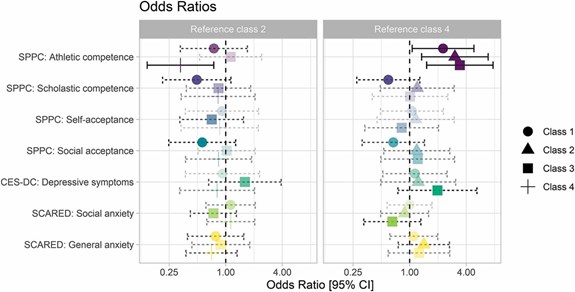The Longitudinal Associations Between Mental Health, Digital Media use, and Physical Activity During Adolescence
Most adolescents are insufficiently physically active globally, while time spent using digital media, a common sedentary behavior, has increased in recent decades. Simultaneously, the prevalence of depressive and anxiety disorders has increased among youth. Evidence for the relationship of physical activity and digital media use with mental health among adolescents is inconclusive.
Cross-sectional studies often assume low levels of physical activity and high amounts of digital media use represent the causal factor, that is, they worsen mental health. However, the association may also be reverse; adolescents with poorer mental health may be less likely to engage in favorable behaviors. In addition, many existing studies do not differentiate between different types of digital use, such as between active use (participatory media use, e.g. chatting, liking) and passive use (media consumption, e.g. viewing programs), although different types of digital media use may be differentially associated with mental health. Moreover, research has traditionally concentrated on examining individual behaviors and their associations with health, although different combinations of physical activity and sedentary behaviors may have important implications for wellbeing. Therefore, we aimed to 1) identify behavior profiles indicated by different types of digital media use (active and passive use, gaming, and related bedtime delays) and physical activity in adolescence, and to 2) examine whether preadolescent mental health predicted behavior profiles four years later.
This study included 1,285 Finnish participants assessed at 11 years of age and followed up four years later. Participants completed the Center for Epidemiological Studies Depression Scale for Children (CES-DC), Screen for Child Anxiety-Related Emotional Disorders (SCARED) and Self-Perception Profile for Children (SPPC) at baseline, as well as reported digital media use and physical activity at follow-up. A latent class approach was employed to identify behaviour profiles at 15 years of age, membership of which was then predicted with earlier mental health and covariates (sex, maternal socioeconomic status, parental educational level, and body mass index z-score, passive and active digital media use and physical activity at baseline).

Fig. 1. Four identified behaviour profiles (Classes C1–C4) at 15 years old. Most likely responseoption (mode) plotted with black over the observed response distribution by most likely class. Variable names: 1 = on weekdays, 2 = on weekends or days off. Response categories: for digital media use: 1 = not at all, 2 = moderate, 3 = elevated, and 4 = excessive; for bedtime delay: 1 = no delay, 2 = slightly delayed, 3 = delayed, and 4 = very delayed; and for physical activity: 1 = very low, 2 = low, 3 = moderate, and 4 = high.
The study identified four behavior profiles (Figure 1). About 30% of adolescents belonged to the “healthiest” behavior profile characterized by moderate digital media use and high physical activity, whereas 23% belonged to the “unhealthiest” behavior profile characterized by high passive digital media use and gaming and low physical activity. After adjusting for confounding factors, symptoms of depression or anxiety did not predict later behavior profiles. However, higher amount of physical activity and better self-perception of athletic competence among the 11-year-olds predicted belonging to any other profile than to the “unhealthiest” behavior profile four years later (Figure 2).

Fig. 2. Odds ratios and 95% confidence intervals (CI) for mental health indicators at 11 years as predictors of behaviour profile membership (Classes C1–C4) at 15 years, after adjusting for covariates. X-axis on logarithmic scale, dashed error bar indicates a non-significant odds ratio (confidence interval contains 1).
The results suggest that earlier physical activity and athletic competence-related self-esteem are stronger predictors of physical activity and digital media use behavior during adolescence than mental health symptoms alone.
Engberg E, Hietajärvi L, Maksniemi E, Lahti J, Lonka K, Salmela-Aro K, Viljakainen H.The longitudinal associations between mental health indicators and digital media use and physical activity during adolescence: A latent class approach, Mental Health and Physical Activity, 2022 March 22;100448, doi.org/10.1016/j.mhpa.2022.100448.
